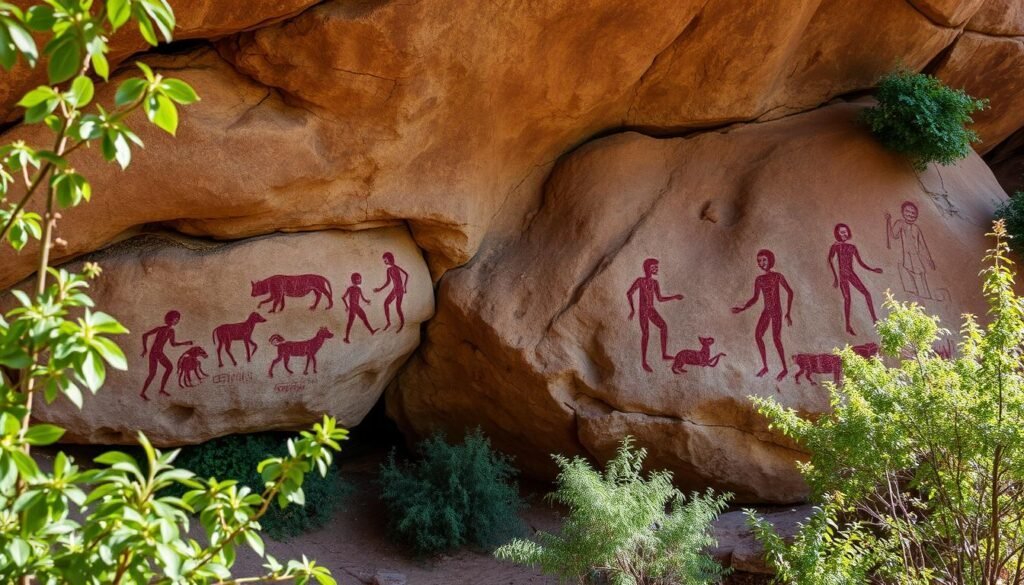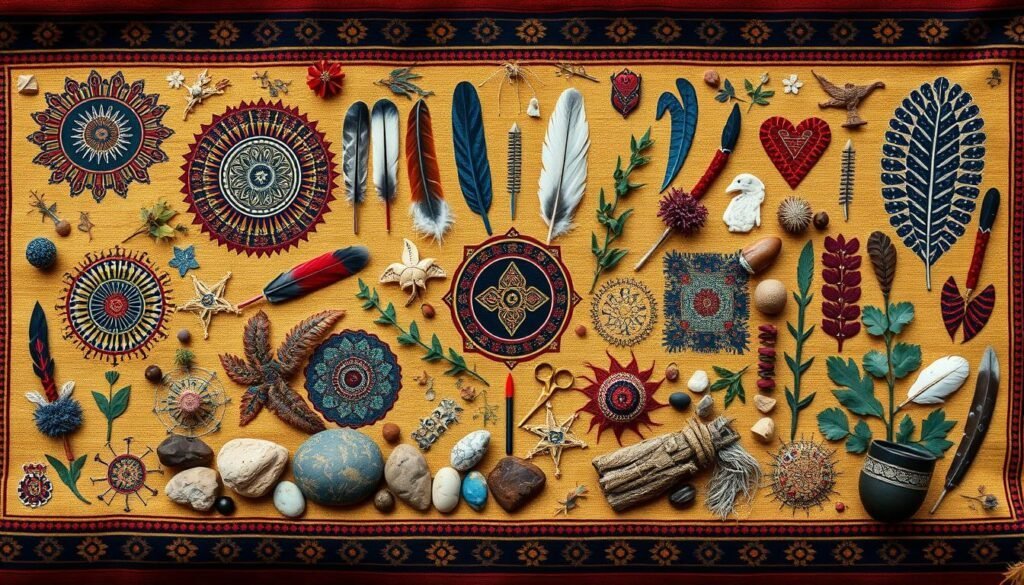
All history is written on the white pages of art. It reflects the thoughts, beliefs, and creations of previous civilizations. “Ancient Artz” takes one backwards in time, revealing some mysterious stories and immortal beauty left at the disposal of ancestors.
From the high Egyptian pyramids to the beautiful pottery of ancient China, from the wonderful rock paintings of France to the glorious pyramids—all that was more than an art; they all spoke of life, culture, and spirituality.
The petroglyphs in the US Southwest and the Chauvet Cave of France hold many secrets. Studying them can help us understand the common past because they reveal the worldviews and ideas of our ancestors.
This site is for you if you’re really into ancient art or want to learn about people from the past. Here, let’s open ancient works filled with their mysteries and tales.
Read Also: Basketball Stars Unblocked Games: Play Free Online Now
Understanding the Origins of Prehistoric Art and Cave Paintings
Explore the world of prehistoric art, where humans first showed their creativity. See how cave paintings reveal the skills and imagination of our ancient ancestors.
Decoding Paleolithic Cave Art Symbols
Palaeolithic cave art is thousands of years old. It’s a mix of symbols and images that show what our ancestors believed and did. These paintings include animals and shapes, giving us a peek into their art and culture.
Materials and Techniques Used by Early Artists
The artists of the Paleolithic era used many materials and methods. They mixed natural colours like ochre and charcoal on cave walls and even used bones to blow colours, creating lasting works of art.
Notable Cave Art Locations Worldwide
These sites are just a few examples of cave art that amaze and inspire us. They show the creativity and cultural legacy of our prehistoric ancestors.
Ancient Artz: Tracing Human Evolution Through Creative Expression
Exploring ancient artz shows a deep link between human creativity and our brain growth. Cave paintings and petroglyphs worldwide give us a peek into our species’ growth. They show how our minds and culture have evolved.
Looking into ancient art, you see how our ancestors’ art changed over time. From simple shapes to detailed figures, their art shows our growing ability to think abstractly and how we started to use symbols to express ourselves.
The tools and colours used in ancient art also tell a story. They show how our technology and thinking skills improved together. Experts can learn about our ancestors’ lives and how they adapted to their worlds by studying these works.
Through ancient artz, we see the typical journey of human evolution. These artworks show our shared journey from the earliest times to the rise of civilizations. They invite us to explore our creative past and its lasting impact on us today.
| Era | Artistic Themes | Techniques and Materials |
|---|---|---|
| Paleolithic | Hunting scenes, animals, handprints | Cave paintings using natural pigments, charcoal, and fingers |
| Neolithic | Symbols, geometric patterns, human figures | Rock carvings, petroglyphs, and the use of stone tools |
| Bronze Age | Mythological narratives, depictions of daily life | Intricate metalwork, pottery, and the development of specialized tools |
As you explore ancient artz, you’ll find a wealth of knowledge about human creativity and brain development. From cave paintings to ancient rock art, these works give us a glimpse into our shared intellectual and cultural journey.
The Role of Petroglyphs and Rock Art in Ancient Civilizations

Understanding ancient history requires an awareness of rock art, petroglyphs, and paintings on rocks that provide insight into the customs and culture of our predecessors.
Symbolic Meanings in Rock Art
Petroglyphs and rock art are filled with symbols and images. These symbols represent spiritual beliefs, important events, or everyday life. By understanding these symbols, we learn about the worldviews and lives of ancient people.
Geographic Distribution of Ancient Rock Art
Rock art is everywhere. Several instances are from regions including Africa, the Americas, Australia, and Europe, demonstrating how inventive and interconnected prehistoric people were.
Dating Methods and Archaeological Significance
It is key to figure out when petroglyphs and rock art were made. Scientists use methods like radiocarbon analysis to do this, which helps us understand how art and culture changed over time.
| Technique | Description | Accuracy |
|---|---|---|
| Radiocarbon Dating | Measures the decay of radioactive carbon-14 in organic materials | High accuracy for materials up to 50,000 years old |
| Luminescence Dating | Measures the amount of light emitted by minerals when exposed to radiation | Suitable for dating rock art and other inorganic materials |
| Stylistic Comparisons | Compares the artistic style and motifs to establish relative chronology | Useful for providing context, but less precise than absolute dating methods |
Indigenous Arts and Traditional Crafts Across Ancient Cultures

Explore the world of indigenous arts and traditional crafts passed down through generations. Navajo woven textiles and Pueblo pottery dazzle and show the rich culture of these different societies. These ancestral arts offer a glimpse into the life of ancient traditions.
Explore traditional arts for the ways they were executed, the materials used, and the meanings they carried. The indigenous arts’ ability to tell stories of spiritual beliefs, social structures, and history is indeed unique, for they are not merely crafts but bear unique and powerful values.
Preserving Cultural Identity Through Ancestral Crafts
The artistic and craft tradition serves as an anchor for the sociocultural survival of an indigenous society. Through textiles, ceramics, and the like, this ancient craftsmanship tells of an attitude and a way of life respected and embraced by a people. It represents the community’s self-image.
Celebrating the Diversity of Traditional Art Forms
The world is rich with traditional arts that showcase the creativity of diverse cultures. Each region has unique art forms, from the Pacific Northwest to the Amazon rainforest. These art forms reflect their creators’ distinct identities, histories, and environmental influences.
| Region | Traditional Art Forms | Cultural Significance |
|---|---|---|
| Southeast Asia | Batik, Ikat, Songket Weaving | Representing spiritual beliefs, social hierarchies, and regional identities |
| Sub-Saharan Africa | Kente Cloth, Adinkra Symbols, Beadwork | Conveying cultural narratives, social status, and ceremonial practices |
| Indigenous North America | Pottery, Basket Weaving, Beadwork, Woodcarving | Reflecting connections to the natural world, storytelling, and community traditions |
Celebrating indigenous arts and traditional crafts helps us appreciate our world’s rich cultural heritage. It also shows the enduring power of creative expression.
“The traditions of our ancestors are not relics of the past, but living, breathing expressions of our identity and our connection to the land.”
Conclusion
Exploring ancient artz reveals the power of early human creativity. From cave paintings to rock art, these works tell us about our ancestors’ lives and dreams. They show how human expression has evolved.
Studying these ancient arts gives us a glimpse into the past. It helps us understand how people lived long ago. Seeing the skill and creativity of our ancestors teaches us to value our creative journey.
As you explore ancient artz, remember to be amazed and respectful. These works hold secrets of our past. They connect us to our roots and show the strength of the human spirit.
Frequently Asked Questions
What is ancient artz?
Ancient artz is the creative work of early human societies and prehistoric times. It includes cave paintings, rock art, traditional crafts, and Indigenous arts. These works give us a peek into our ancestors’ lives, beliefs, and experiences.
Why is the study of ancient artz important?
Studying ancient artz helps us understand human culture, technology, and thinking. These ancient works are like historical and archaeological records. They let us see how our ancestors lived, believed, and changed.
By looking at ancient artz, researchers find clues about human growth, cultural exchanges, and artistic progress.
What are some notable examples of ancient artz?
Famous examples include the cave paintings in Lascaux, France, Altamira, Spain, and Sulawesi, Indonesia. Petroglyphs and rock art in the American Southwest, Australia, and Africa are also key. Traditional crafts and indigenous arts, like ancient weavings, pottery, and metalwork, show our ancestors’ artistic talent and cultural heritage.
How do researchers date and study ancient artz?
Researchers use methods like radiocarbon dating to determine when ancient Artz was made. They also study the materials, techniques, and symbols in these artworks, which helps them understand the culture and history behind them. They often work together from archaeology, anthropology, and art history to fully grasp the importance and evolution of ancient artz.
What can we learn about human evolution through the study of ancient artz?
Ancient artz tells us a lot about human thinking and evolution. The growth of art and creative methods shows how complex human thought and society became over time. By studying ancient art, we can see the key moments in human cognitive and cultural growth. It also shows how our species adapted and innovated throughout history.
Muhammad Naeem is a professional blogger and SEO consultant with expertise in creating high-quality content and optimizing websites for search engines with a passion for driving organic growth. As a blogging enthusiasts, we’re passionate about sparking conversations, fostering connections, and inspiring change through diverse perspectives.








